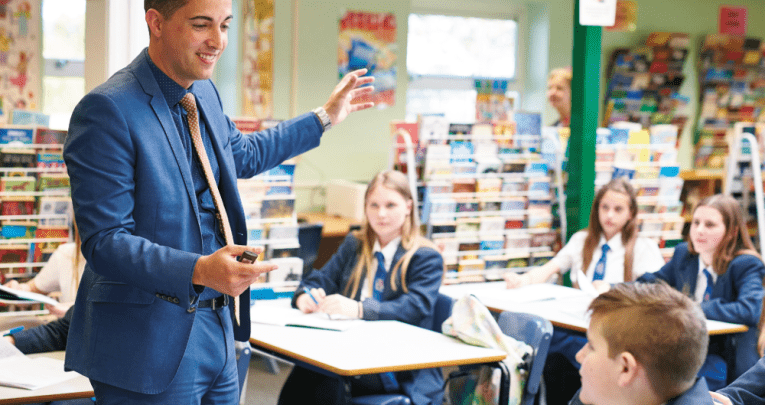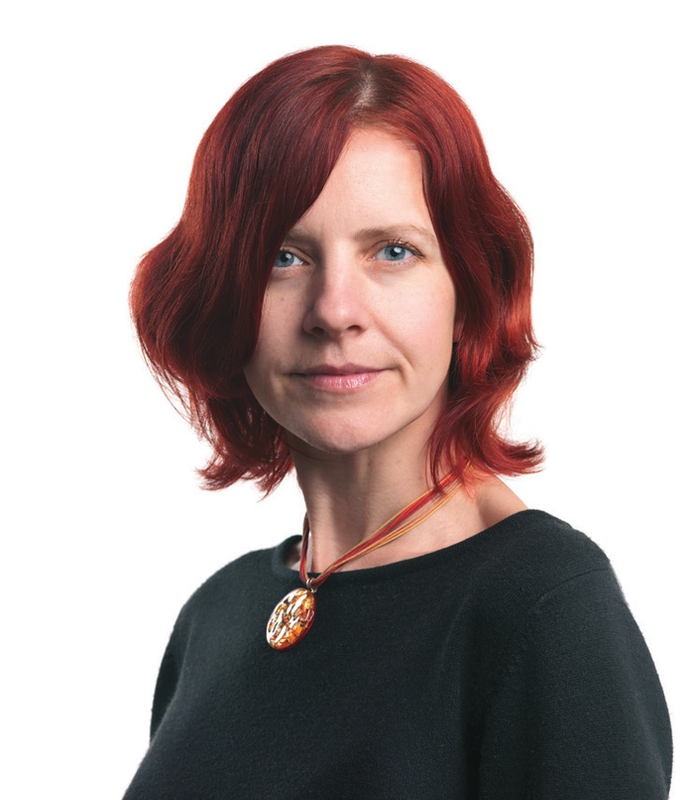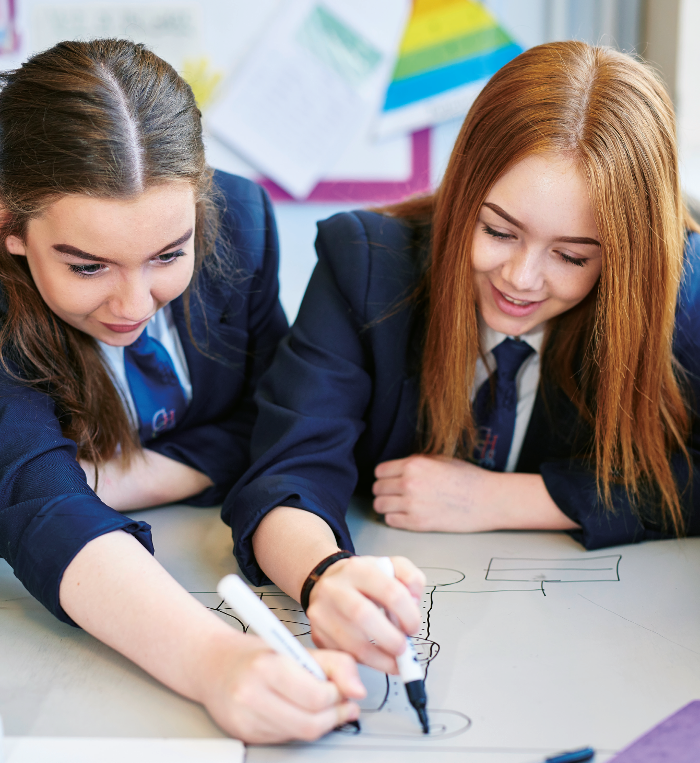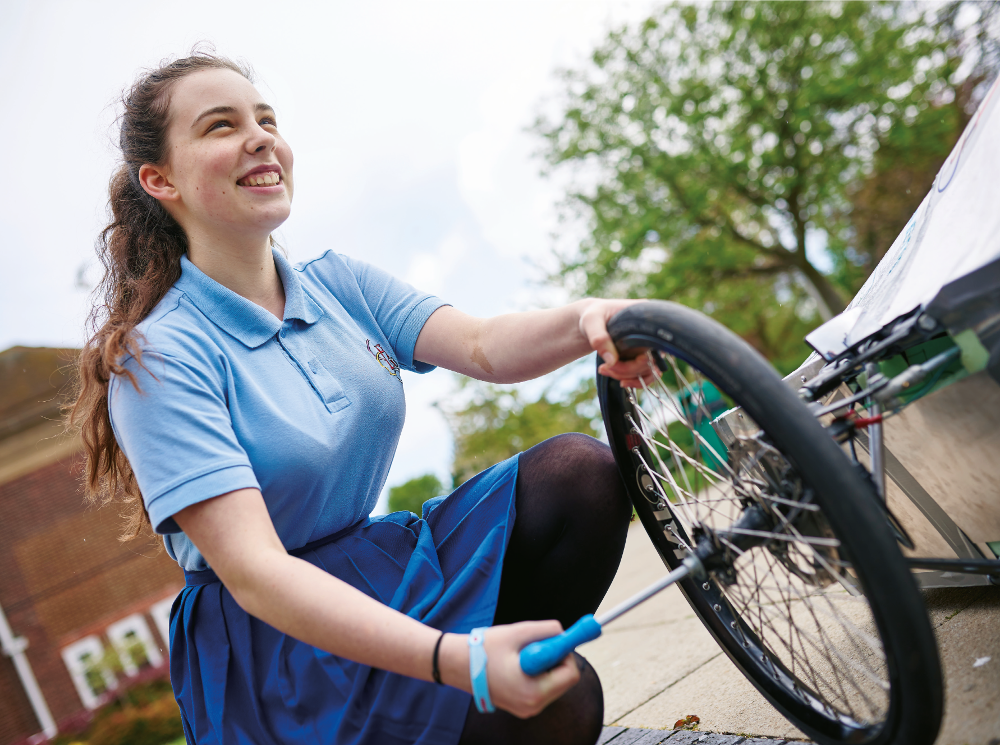“Outstanding Progress Isn’t About Gimmicks” – How Hard Work Bred Success At Clacton County High

Helen Mulley visits the school that topped the Essex league tables for Progress 8 in 2016, to find out what it’s getting right

- by Helen Mulley
- Former editor of Teach Secondary magazine and award-winning podcast host

“There’s no pixie dust,” begins Neil Gallagher, a slight note of warning in his voice as we sit around a meeting room table to discuss what’s been happening recently at Clacton County High School, where he is principal – and which last year achieved the highest Progress 8 score in the county of Essex.
Indeed, achieving a Progress 8 measure of +0.7, put the school in the top couple of percentage points for progress nationally. Although it’s generally agreed (including by Gallagher), that this new measure is not without its flaws, that’s without doubt an impressive accomplishment for any school, let alone a sizeable, non-selective academy serving a coastal community with more than its fair share of socio-economic challenges.
“As a school, like a lot of schools, we just work incredibly hard,” he continues. “There’s no magic to it.” And whilst that was exactly what I’d expected to hear, for a brief moment, I’m bizarrely disappointed. ‘Staff and students work hard, and do well’ isn’t exactly a story that’s going to break the internet, even if I change the last three words to, ‘you won’t believe what happened next!’. But of course, there’s much more to talk about. Everyone in education is working hard – there’s no option to do otherwise. So what’s different about Clacton County High School?
Responding to local limitations
Whilst Gallagher is loathe to paint the institution where he has worked for nine years – originally as vice principal under Jeff Brindle, then taking on the role of principal when Brindle became CEO of the Sigma Trust of which CCHS is part – as especially unusual in its approach to teaching and learning, he does concede that its location and the demographic for which it caters, have led to a particular focus within its mission statement.
‘Aspiration’ is a value that is regularly, and rightly, included in school straplines – but for the students at CCHS, it represents the opportunity to open doors that many of their peers in more well-heeled areas will walk through without even noticing.
“There’s very little migration out of the area, and access to higher education has historically been pretty limited,” explains Gallagher. “Around 50% of our young people at any one time are disadvantaged in one way or another – and in terms of intake, we are invariably sig-minus overall. A vital part of our work, therefore, is to enable our children to progress towards bigger, brighter futures – and that means helping them realise they can choose to go on and do something other than retail or care work, which tend to be the main sources of employment in the town.”
Collaboration for a broader curriculum
Few things are more powerful in raising aspiration than the existence of relatable role models, which is why CCHS is currently in the second year of a genuinely innovative model for its sixth form offering. “The issues we had post-16 – which are common to a lot of schools – were that the breadth of courses we wanted to run simply weren’t affordable, given the number of students looking to study them,” Gallagher points out.
“So, in September 2015, we set up a unique collaboration with the five other non-selective schools in the region that have sixth forms. The University of Essex provides us with a suite of rooms – as part of its outreach programme, for free – and we deliver A level courses there, which students from all the partner schools can access. At the moment we are offering eight courses for one full day each week – from next year, we’ll have the venue for two days a week, and will be able to offer 15 courses. These are minority, aspirational qualifications – like art history, RE, further maths, French – that as a single school we just couldn’t deliver.”

As well as massively increasing the number of pathways open to students at KS4 and beyond, this collaborative model (which was a finalist in last year’s Times Higher Education Awards) has an additional benefit, in that it is a chance for the young people involved to spend time in a campus environment, and realise that it’s not a life choice that’s beyond their reach.
“Both of these things,” observes Gallagher, “trickle down to the rest of the school. Success breeds success – and older pupils become role models to the younger ones. There’s been a definite culture shift across all phases, away from the old ‘boffin’ attitude, where a desire to learn and achieve would have been mocked and sneered at, to an atmosphere where being bright, and wanting to do well, is admired and celebrated. And the pupils, on the whole, are proud of their school.”
A comprehensive STEM programme
Another way in which CCHS works to expand the horizons of opportunity open to its young people is through a strong focus on STEM, both within the curriculum and as part of its extracurricular and enrichment offering. Lizy Watson is lead practitioner in science at the school, and coordinates the STEM programme, which has been developed over a number of years.
“We’ve built some really good external links, which are incredibly helpful,” she tells me. “For example, we do a lot of work with Imperial and King’s College. The Smallpeice Trust has come in to run projects with our students here, as well as inviting them to residential courses. We’re one of only two Arkwright Scholarship schools in the region (the other being the boys’ grammar). And we have children out on Nuffield scholarships.
‘We regularly organise collapsed timetable days to allow different year groups to work on STEM-based problem solving, and we are running two main after school projects this year: a group of year 9, 10 and 11 pupils is refining the Formula 24 car that our sixth formers built last year; and another team is working on version two of an ROV mini-sub that we hope they will be able to use to investigate wrecks off the local coastline. As teachers, we facilitate these things – so, we order parts and so on – but the kids have to do it themselves; they’ve taught themselves the necessary electronics, for example.”

Georgia Crick, Year 9
Watson is keen to point out the diverse reach of all these programmes. “Yes, you’ll see the triple science students there,” she says. “But it’s about engagement, too. There are pupils involved who would never have thought about working in the STEM industries without this kind of hands on experience. And it’s lovely to see their social skills improve, too, as they mix with others of different ages, and those with whom they might not spend time in the ordinary run of things.”
Quality teaching, all the time
CCHS’s STEM and sixth form programmes are certainly inspiring – but aspiration alone can’t lead to the kind of progress and outcomes that the school’s students are currently demonstrating. So what’s happening in the classrooms? To Gallagher, it’s actually pretty simple.
“There are two elements that lead to success, in my view,” he states. “The first is around quality first teaching – making sure that classroom experience is really outstanding. And the second is around contact time – because clearly, the more time you spend around that teaching, the more you’ll take in. We are very proactive about CPD, which we deliver entirely in regular twilight sessions, because that’s what staff tell us works for them – little and often – and we do everything we can to maximise contact time, with three-year GCSE courses, a narrower range of options than some schools, and a very healthy range of non-GCSE courses as part of our core curriculum.”
When I take a learning walk around the school, the quality of teaching I see, across a range of subjects, year groups and ability sets, is indeed impressive. Behaviour is impeccable, students are on-task and confident, and – crucially – the use of academic vocabulary is consistent.
I watch a Y7 English lesson on persuasive writing in which I know the pupils are set according to ability, but am completely unable to identify whether it’s a top, middle or bottom group; and an RE class in which the use of questioning is so intriguing that I have to be dragged reluctantly away in order to stick to the itinerary. The music department is not only fabulously well-equipped, but seriously cool; and a physics lesson featuring a carousel of experiments is a masterclass in lab management.
Teachers, not technology
It’s a relatively low-tech teaching environment – in a Y8 Spanish class, for example, I watch learners using wipe-off markers to draw and label their ideal town centre on the tabletops. There are projectors and visualisers in every classroom, but only the maths department has interactive boards, and mobile devices are available, but must be booked in advance.
“It’s a question of priorities,” explains Gallagher, when I bring this up later. “You always have to ask yourself, what is going to make the most impact. For me, that is always going to be ‘really good teachers’; so that’s where my budget is going.”
Clear aspiration with hands on opportunities, quality teaching, and the maximum possible time allowed for that teaching to happen. It’s an approach with no need for pixie dust. And yet it’s having an impact on the young people at Clacton County High – and the community in which they live – that could be described as pretty magical.










